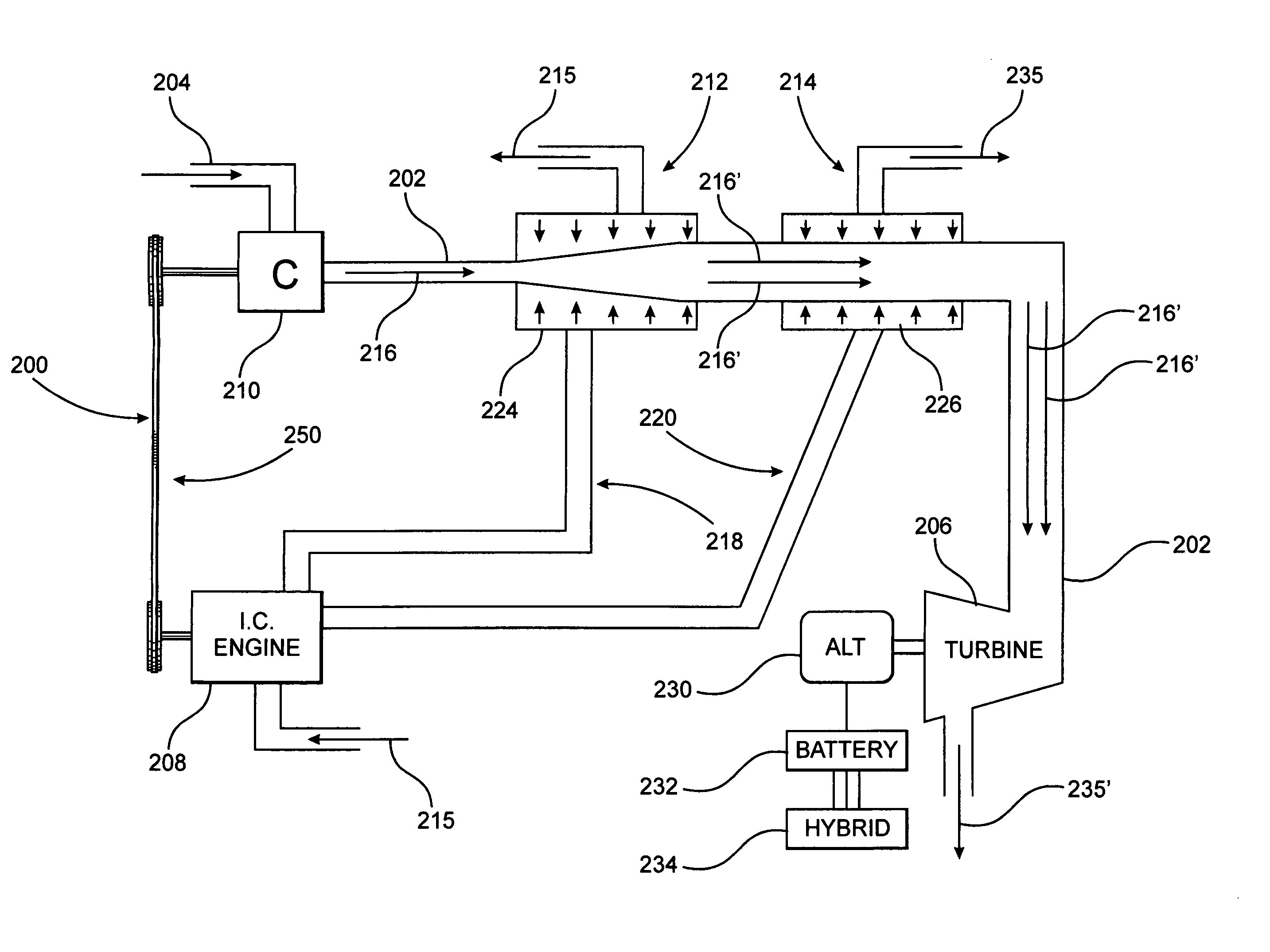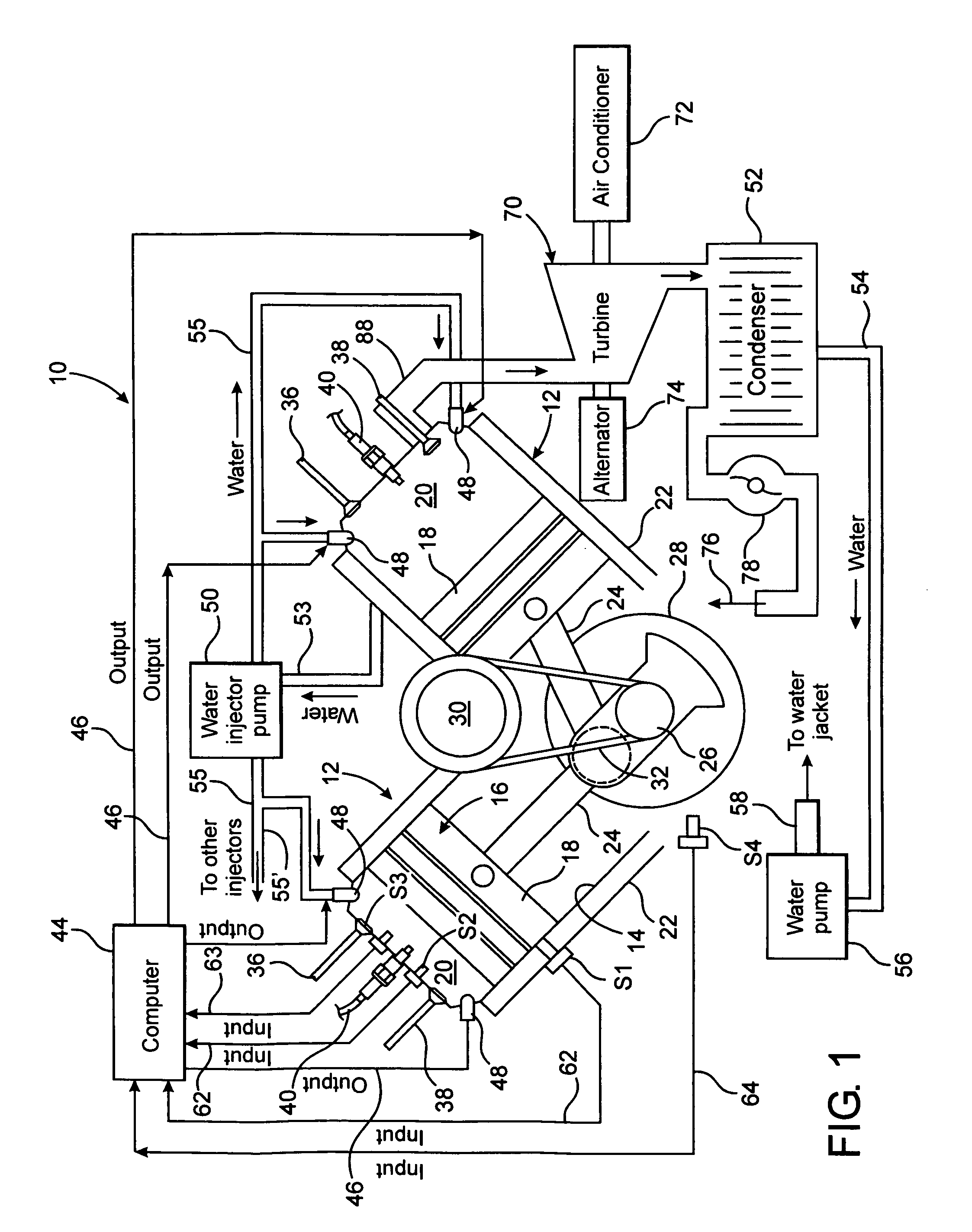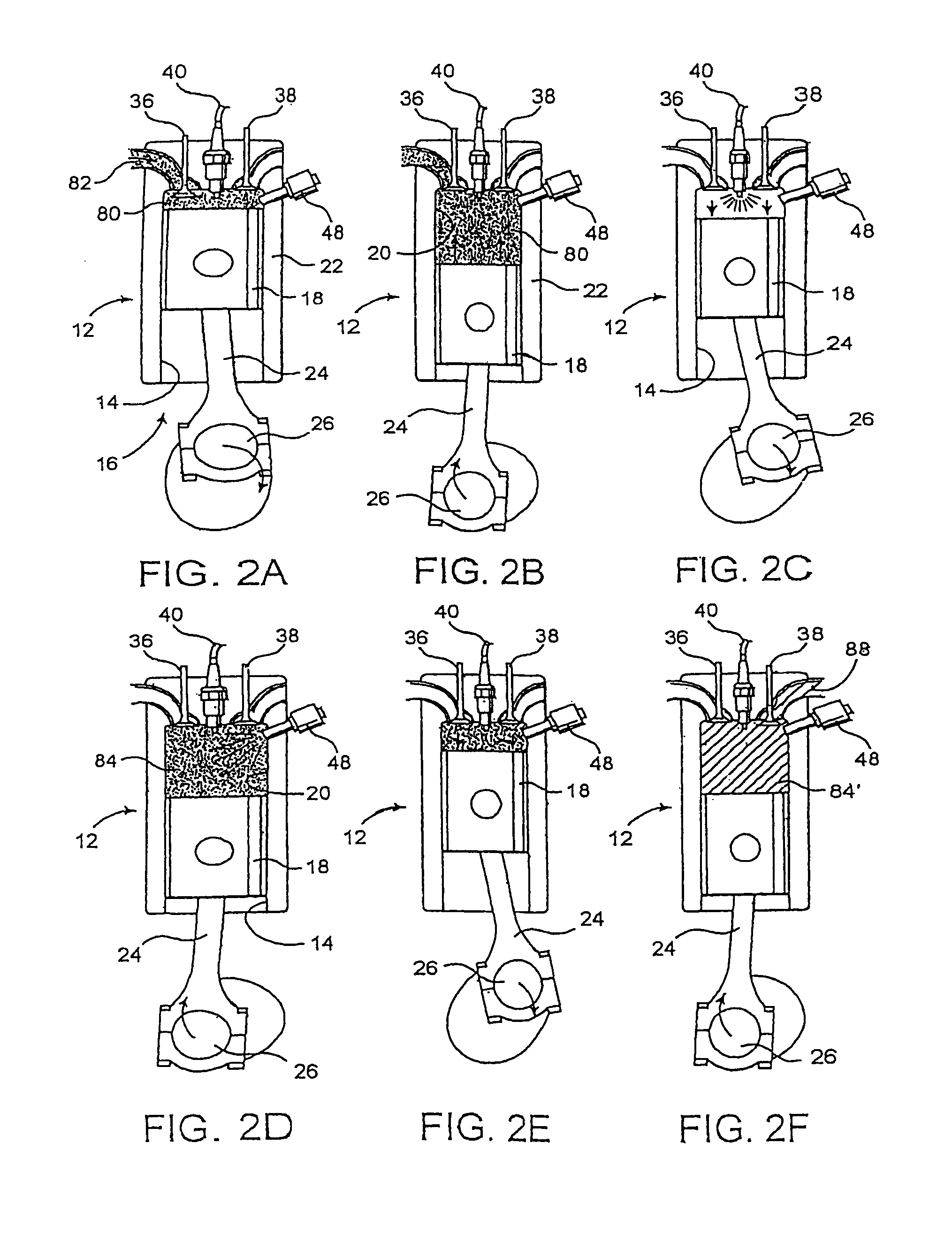System and method for recovering wasted energy from an internal combustion engine
a technology of internal combustion engine and waste energy, applied in the field of system and method, can solve the problems of affecting the efficiency or performance characteristics of such engines, failing to provide an internal combustion engine capable of operating on a six-stroke cycle, and immediately “flashing” into steam
- Summary
- Abstract
- Description
- Claims
- Application Information
AI Technical Summary
Benefits of technology
Problems solved by technology
Method used
Image
Examples
Embodiment Construction
[0053]One or more preferred embodiments of the present invention are directed towards a computer controlled internal combustion (IC) engine, and its method of operation. Moreover, the subject IC engine is designed to operate on a six-stroke cycle and provide an auxiliary power stroke through the regulated injection of water into the combustion chamber or cylinder of one or more piston and cylinder assemblies of the engine and the conversion of the injected water into steam. It is emphasized that while related preferred embodiments of the present invention will be explained primarily with reference to a single piston and cylinder assembly, having an at least partially conventional design, the computer controlled IC engine of the present invention may be of the type incorporating one or a plurality of such piston and cylinder assemblies and may be specifically adapted for use as the power source in an automobile, truck or other motorized vehicle.
[0054]With primary reference to the FIG...
PUM
 Login to View More
Login to View More Abstract
Description
Claims
Application Information
 Login to View More
Login to View More - R&D
- Intellectual Property
- Life Sciences
- Materials
- Tech Scout
- Unparalleled Data Quality
- Higher Quality Content
- 60% Fewer Hallucinations
Browse by: Latest US Patents, China's latest patents, Technical Efficacy Thesaurus, Application Domain, Technology Topic, Popular Technical Reports.
© 2025 PatSnap. All rights reserved.Legal|Privacy policy|Modern Slavery Act Transparency Statement|Sitemap|About US| Contact US: help@patsnap.com



